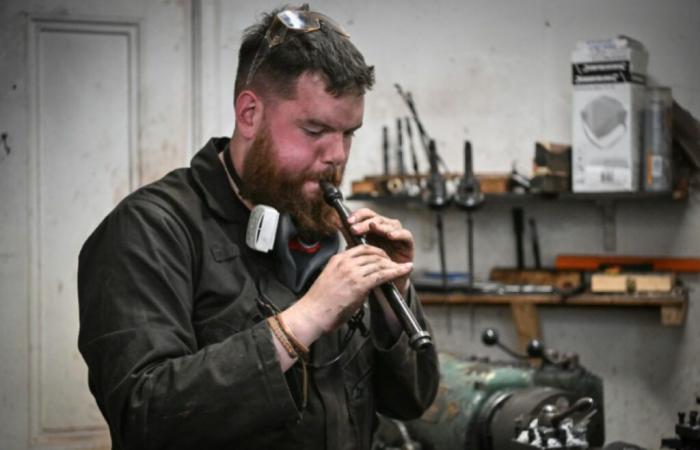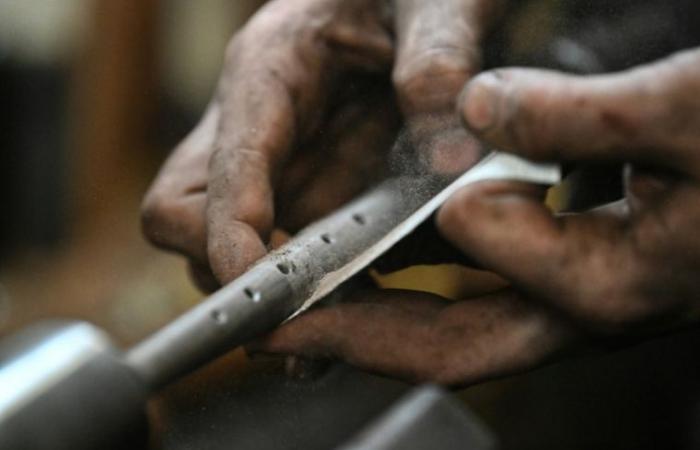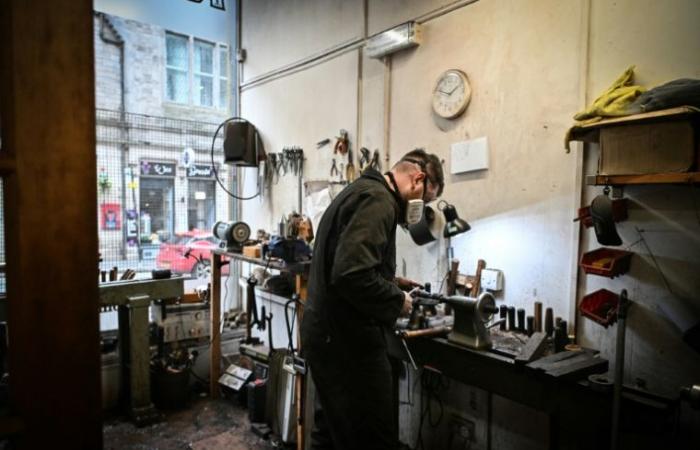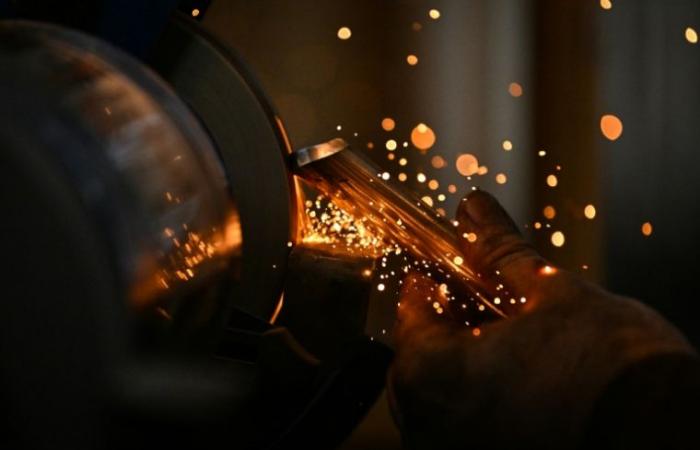Bagpipe maker Ruari Black in his workshop in Edinburgh, October 7, 2024 (AFP / ANDY BUCHANAN)
In his workshop in the heart of Edinburgh’s historic district, Ruari Black is one of the last artisans to make bagpipes entirely by hand, maintaining a know-how emblematic of Scotland which is now disappearing.
Near the Royal Mile, the avenue which connects Holyrood Palace and Edinburgh Castle, “Kilberry Bagpipes” doesn’t look like much, with its slightly outdated sign and its grilled window.
“We are one of the last artisanal makers, definitely in Edinburgh, the capital of Scotland, but probably in the whole world,” says Ruari Black as he shapes a pipe with a lathe.
Bagpipe maker Ruari Black at work in his workshop in Edinburgh, October 7, 2024 (AFP / ANDY BUCHANAN)
Inseparable from Celtic culture and the Scottish Highlands region, the bagpipes, known for their powerful and heady sounds, were notably used until the 20th century to support the morale of Scottish soldiers on the battlefields, even on the beaches of Landing in Normandy during the Second World War.
But now, this wind instrument composed of several pipes (the drones) and a bag containing the air blown by the player, is most often manufactured industrially.
Other variants exist in many regions, notably in the Maghreb, the Balkans, or elsewhere in Europe.
At Kilberry, a workshop founded in 1990 by two bagpipe players, including Dave Wardell, who is still present today, the order book is such that a customer must wait around two years to obtain their bagpipes.

A bagpipe player in Braemar, central Scotland, September 7, 2024 (AFP / ANDY BUCHANAN)
Making an instrument takes about a week, says Ruari Black.
After drilling and shaping the pipes, the craftsman equips them with mounts and rings, carries out the finishing touches and installs the various components by fixing them to the pocket.
– Son inimitable –
Once finished, the bagpipes produce “our distinctive sound”, assures Ruari Black, who joined Kilberry in 2019 to do his apprenticeship.
“We strive to have that consistency across each instrument, to make sure they sound the same,” even though each has “its own character, in terms of look and feel,” he adds. .

Bagpipe maker Ruari Black in his Edinburgh workshop, October 7, 2024 (AFP / ANDY BUCHANAN)
This requirement attracts customers from all over the world, ready to pay between 1,200 and 6,000 pounds (between 1,430 and 7,200 euros) for a traditional Highland bagpipe.
“They want that sound that we strive to produce,” insists Ruari Black.
There are both experienced players and beginners wanting to give themselves their first practice “chanter”, the little pipe that allows you to play the melody.
For Ruari Black, it is easy to differentiate a handmade instrument from another made on a machine, the latter not having the characteristic finish of a “hand-turned” instrument, nor the decorative patterns that the craftsman grave on the bagpipes.
Some mass-produced instruments are also notable for using synthetic ivory for the mounts, rather than genuine ivory, he notes.

Bagpipe maker Ruari Black at work in his workshop in Edinburgh, October 7, 2024 (AFP / ANDY BUCHANAN)
Craftsmen are also now trying to give up this rare material, which comes from protected animals, by looking for other options, such as elk antlers.
“Elk shed their antlers” naturally, making it a more sustainable alternative option, says Ruari Black.
Despite this adjustment with tradition, nothing can ever replace a handmade bagpipe, according to him.
“Continuing to make them by hand means a lot to me, that’s how it’s always been done,” he emphasizes.
And if he regrets being “one of the last to continue something that is disappearing”, he is “happy to perpetuate” this tradition.










